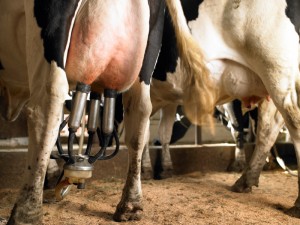The Center for Disease Control and Prevention (CDC) has issued a report about the 2014 outbreak of Campylobacter infections in Utah associated with raw milk consumption. In May 2014, the Utah Public Health Laboratory (UPHL) notified the Utah Department of Health (UDOH) that three patients tested positive for Campylobacter jejuni infections that had the same pulsed-field gel electrophoresis (PFGE) patterns. All three patients had consumed raw milk from “dairy A.” This facility was identified as Ropelato Dairy in Ogden, Utah at the time.
 Raw milk sales are legal in Utah from the farm to the consumer with a sales permit. These dairies must submit monthly milk samples to the Utah Department of Agriculture and Food (UDAF) for somatic cell and coliform counts. Coliform counts indicate the presence of feces, and somatic cell counts can be indicators of contamination in raw milk. Dairy A’s routine test results were within acceptable levels before this outbreak.
Raw milk sales are legal in Utah from the farm to the consumer with a sales permit. These dairies must submit monthly milk samples to the Utah Department of Agriculture and Food (UDAF) for somatic cell and coliform counts. Coliform counts indicate the presence of feces, and somatic cell counts can be indicators of contamination in raw milk. Dairy A’s routine test results were within acceptable levels before this outbreak.
Altogether, 99 cases of Campylobacter jejuni infection were identified from May 9, 2014 through November 6, 2014. This outbreak had serious consequences for those sickened. Patients A and B were a parent and child who got sick in May 2014. Both were hospitalized. Patient A died one week later of multisystem organ failure, related, in part “to gastroenteritis and underlying medical conditions.” Overall, 10 patients were hospitalized in this outbreak. People over the age of 65 who contract Campylobacter infections are at risk for developing Guillain-Barré Syndrome, which can cause permanent paralysis.
Of the 99 cases, 59 were confirmed and 40 were probable. They were identified through laboratory isolates and patient interviews. Most of these patients lived in three northern Utah counties, Weber, Davis, and Salt Lake, that are in the vicinity of dairy A. The patients ranged in age from 1 to 74 years. Forty-four of the patients, or 44%, were children under the age of 18.
Among patients who were interviewed, 53 reported drinking raw milk. Fifty two of those people drank raw milk obtained from dairy A. Those numbers were confirmed by dairy A’s raw milk sales ledger. Among 41 patients with no known raw milk consumption, 21, or 51%, reported eating queso fresco, a Mexican-style cheese.
Finding the bacteria at the dairy proved difficult. The dairy was allowed to continue the sales of raw milk after this outbreak was identified, since it passed inspections in July and July 2014 with no critical violations. No pathogens were detected in the samples collected during those inspections. But pathogenic bacteria often easily elude detection because they tend to clump together in very small numbers, and there may be too few bacteria to be detected by culturing, even there are enough bacteria present in the milk to make someone sick. Unless every milliliter of milk is tested, there is no way to ensure that the milk is free of pathogens. Other than pasteurization.
The outbreak continued to increase. On July 29, 2014, representatives from all three Utah health and agriculture departments conducted a collaborative investigation at dairy A. The raw milk bulk tank was agitated, and a UDAF inspection collected a 1-liter sample or raw milk. This milk was cultured and Campylobacter jejuni was finally isolated in the product. This bacteria had the same PFGE pattern identified in specimens from the first three patients. In addition, 55 of the 56 isolates collected from patients sickened in this outbreak produced indistinguishable PFGE patterns, which identifies the DNA of bacteria.
On August 4, 2014, UDAF suspended dairy A’s permit to sell raw milk. The dairy’s permit to sell raw milk was reinstated on October 1, 2014, but then seven more cases of Campylobacter infections were identified. On December 1, 2014, UDAF permanently revoked dairy A’s raw milk sales permit.
About 3% of the U.S. population drinks raw milk, in part because of perceived health benefits. But this product is often contaminated with pathogenic bacteria. Campylobacter is ubiquitous in the environment, and is very difficult to culture from milk since it is so fragile. In addition, the report states “routine testing of and standards for raw milk do not ensure that the raw milk is free of pathogens. There is a lack of correlation between bacterial counts and the presence of pathogens in raw milk.
A paper published in Nutrition and Food Science at the University of Wisconsin in 2015 states, “just before World War II, in 1938, it was estimated that milkborne outbreaks constituted 25% of all disease outbreaks (related to food/water) in the United States. Today, with the widespread use of pasteurization and other sanitation procedures outlined in the Grade A Pasteurized Milk Ordinance, milk and fluid milk products account for less than 1% of reported outbreaks caused by food/water consumption.”
The report ends with this statement, “consumers should be aware of dangers associated with consuming unpasteurized milk. Current raw milk testing standards do not readily detect contamination; thus, the safest alternative is to consume pasteurized milk.”




